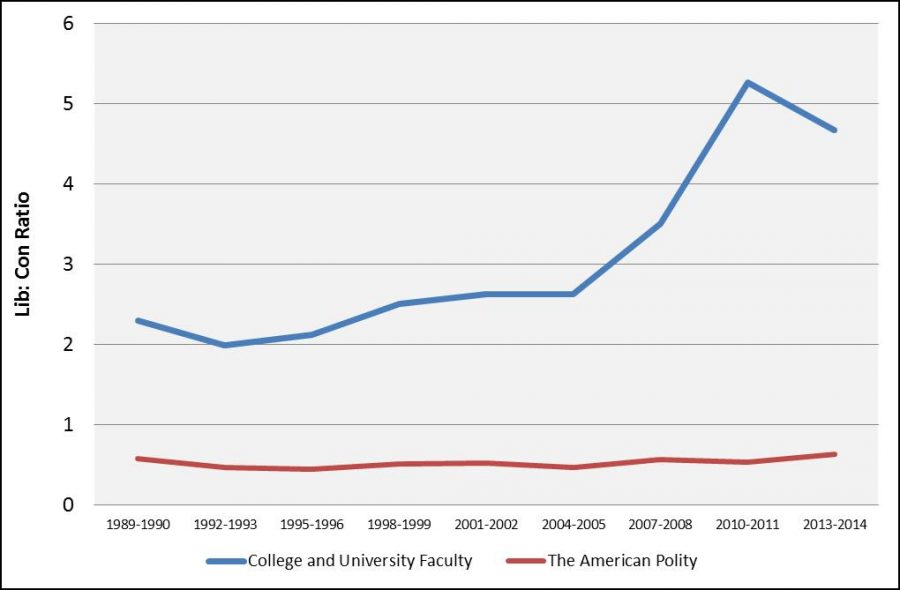
Started in 2013 in Kelly’s home, and officially in 2015, Prenda has created a platform enabling tuition-free microschools of 10 students or fewer — to be managed by Prenda Guides as teachers and content deliverers. At the height of the pandemic, there were as many as 4,000 students. Currently, with roughly 3,000 students actively enrolled, the educational content provider announces a $20 million investment to expand the vision of tuition-free microschools.
CEO and Founder Kelly Smith started Prenda Microschools as a coder. At a local library, Smith observed kids working on their own motivation and interests replete with digital research capabilities. Smith estimates that he personally worked with and observed about 2,000 children during his time running the code clubs. Smith became increasingly fascinated by his observations of the ways the new generation was learning.
As the COVID-19 pandemic descended on the world in 2019, schools across the world responded by closing their doors. Institutions that were already familiar with teaching online integrated systems saw an opportunity to grow. Teachers shone in their Zoom classes or conversely, failed to meet the standards of adapting to the evolution of technology, communications, and the education of the next generation. The changes in education forced educators to start rethinking and redesigning learning environments.
Smith respected the importance of free will and choice in learning anything. Smith wondered what would happen if a school were like his coding clubs, where fostering agency and eagerness for learning were paramount. As a result, Prenda Microschools was born, without force or strict adherence to grading systems, but learning instead.
Adapted, hybridized models of education began to become prevalent.
“We arranged groups and provided learning guides to the kids. We then supported the process and helped them become empowered learners by setting their own goals. By 2018, I was excited enough about this core learning hypothesis that I wanted to see if you could design a whole school around that.
I would watch these kids come to the club complaining about how much they hated school and how they were bad at math and then I would see them figure something out in computer programming that was much harder than anything their teacher would ask them to do.
My experience and my kids’ experience in traditional education is that it was things done to you against your will. You may do fine, some kids do fine, but you’re not really going to learn unless you choose to learn. There is this agency, this humanity, at the bottom of it. It may sound fluffy but it’s a profound insight.”
Kelly Smith
It’s Not Tuition-Free.
Prenda is part of the micro-school movement: an educational shift occurring over the past decade in which educational companies and parents create intimate, mixed-age learning spaces. A blend between homeschooling and private schooling, micro-schools retain the curriculum freedom and schedule flexibility characteristic of homeschooling, while relying on paid teachers to facilitate the classroom experience.
Micro-schools are generally a fraction of the cost of private school tuition and educate no more than 10 students at a time. For a potential Prenda student, a classroom with one teacher or guide costs $8,000 per child per year. The $8,000 yearly enrollment fee is then paid by the families of Prenda students, which is split by Prenda Microschools and Edkey, a Sequoia-based online school in Arizona.
Under formal arrangements, EdKey enrolls Prenda students in its Sequoia online school and in addition to tuition, collects charter school funding from the State of Arizona, where Prenda essentially functions as a microschool provider.
SEC Filings and Investment Rounds
Incorporated in the State of Delaware, Prenda has raised more than $7 million from the sale of equity, stock options, and warrants since 2017 (SEC Filings, 2020).
More than $6 million of that was issued in May of 2020.
In early June of 2022, Prenda CEO Kelly Smith announced a $20,000,000 Series B round, led by Alexis Ohanian of Seven Seven Six (776). Key investors include VC Learn Capital, Modern Venture Partners, Peak State Ventures, and a range of angel investors.
In Mesa, Arizona, Prenda operates another remote company with distributed employees. This separate corporate entity had raised over $26 million from investors.
The Investor Hitlist
- Y Combinator
- AngelList
- Learn Capital
- Eric Ries (Lean Startup author)
- Mango Capital.
What Prenda is currently valued at as of June 22nd, 2022, is not disclosed, but there is certainly a track history proving a trajectory of growth.
How Does Prenda Work?
To understand how a microschool works, it’s best to start with the student perspective.
Your Prenda Microschool education begins with a small group of 9 or fewer students in an online class. From graded assignments with state standards of rubrics and criteria, your Prenda guide helps you through setting your goals on a daily basis and learning how to accomplish them, from a small scale to an overview perspective.
There’s something interesting to the way each day is set up. Every day, you’re supposed to conquer something, collaborate with someone, and end up creating something.
In the Conquer mode of the Prenda software, you have to set a daily goal for what mastery you’re working on today.
You see a menu with options such as basic skills: reading, writing, math, and other core subjects.
There are links to Khan Academy and Mystery Science for the framework of your education, and the learning management system tracks your progress in line with the goals you set in the morning. Now, you’re thinking this might be cool as you look around you, seeing that it’s not only an online program but there are centers for you to collaborate on the projects and goals you set.
In the Collaborate mode, you see that it’s discussions that will build your critical thinking skills, in hopefully a safe space. You understand that you’re going to have to learn these things for success in the coming years.
In the Create mode, you see that you’re supposed to start a fun project with the skills and knowledge you’re learning.
Ultimately, the quality of your education depends on you and the experience, passion, and meticulousness of your Prenda Guide. You know that everything you see is readily accessible, albeit in different organized systems for what you are supposed to know by the time you’re supposed to be independent.
Who Are Prenda Microschools For?
The microschool movement is growing — there are parents who see the true value in finding teachers and environments free of institutionalized influences. Rather than viewing a student as an empty vessel to fill with information, modern education in a microschool is characterized by enabling a student to develop and question the concepts around them. As most institutional schools funded by governments tend to be influenced largely by liberal policies and objectives, newer generations growing up in these systems tend to start out liberal, then become conservative as they grow older. In a nutshell, a microschool is for a family that wants a greater level of quality assurance and breadth of options for their young, while educating them to find their own way without political influences.

For example, on an account named LibsOfTikTok, content exists where public school teachers brag about validating and discussing their sexuality with their 6-year-olds IN CLASS. As a result, Florida has recently passed a bill, where institutional teachers are banned from discussing any form of sexuality with kids under the age of 10.
At higher levels of education, in high school, students rarely graduate with a detailed knowledge of personal finance. Even at bachelor’s level programs, a personal finance segment takes up just about a week in a microeconomics course, approximately 51 weeks shy of a true grounding in what personal finance in 2022 really means. Logically, personal finance is THE most important financial information with which a young person begins their post-formal education life.
Some parents just want their 6-year-old to focus on bees, how a tree grows, and compound nouns in English. Parents of older students may not want national school systems to be impacted by macro-influences. They may, just might, desire to keep the education of their young pure, knowledge-based, and factual.
The Bigger the School, the Greater the Influences
Historically, educational systems need funding. From a log cabin built in a pasture to MIT laboratories, facilities and learning tools enhance the education of any student. With any kind of donation to an educational system, most donors might make an effort to be heard on policies and the overall goals of an educational institution.
Universities today function on an array of complex procedures and policies to ensure that student demographics are fixed. Students achieve long-term aims through the benefits of a certified, institution bearing all the fruits of a degree from an accredited institution. Sponsors and donors alike fund million-dollar facilities, promoting the growth of disciplines in STEM subjects.


San Carlos Apache Indian Reservation in Arizona

Jeremiah Cota is a tribal member of San Carlos Apache Indian Reservation, which was sectioned off in Southeastern Arizona. As a member of his community, he witnessed the youth of his tribe receiving “F” on a regular basis, awarded by the Arizona Department of Education. The student proficiency scores are poor, despite an annual per-student budget of nearly $17,000 in 2018, where these public schools on average, receive more than 70% more funding than the state average. The tribe has generally two options for education: public or homeschool.
Two private, religious schools do exist on the reservation as a third option. But most families have no other choice than to send their children to the failing public schools or leave the reservation due to financial constraints — if they want a different educational environment for their young.
In August of 2019, after asking the local church for some space, Cota helped to launch two Prenda classrooms on the San Carlos reservation. Having started with 22 students, Cota has continued expansion to meet mounting parent demands in the local community.
Cota noted that many parents in tribal communities were frustrated by their limited options. When he hosted an informational meeting at the San Carlos reservation, more than 200 parents showed up, concerned mostly about bullying, violence, stabbings, and other safety issues in the public schools. Voiced as well, was the frustration caused by a lack of dedication from the school’s administrators and a curriculum that overlooked their culture.
“Parents thought their only other option was to send their children off the reservation, but we can do this here in our community.
We can have ownership. We can have a world-class education that’s culturally appropriate, that’s within our own context.“
Jeremiah Cota, Forbes Interview: Micro-School Network Expands Learning Options
The flexibility of the Prenda content delivery allows for daily individual and group projects at the Prenda San Carlos School. Cota brings in guest speakers from the reservation or conducts hands-on exploration of the tribal lands.
“We are very connected to our land, our wildlife, and we want to continue to teach children how to preserve and protect our land.”
Jeremiah Cota
The semi-unique arrangement and combination of access to charter funds have benefited local students of the reservation. Many of the children who participate in the Prenda San Carlos School are eligible for funds through Arizona’s Empowerment Scholarship Account, as well as the education savings account (ESA). Prior, Prenda students who were not eligible for access to the additional ESA resources were able to access it through Sequoia Charter school (Forbes, 2019).
“Arizona is leading the way in school choice and charter schools, it’s crucial we keep this going.
Without this flexibility, we couldn’t do this.
“It gives hope and empowerment to these communities.”
Jerimiah Cota (Forbes, 2019)
In Conclusion
With approximately 80 locations throughout Arizona and 300 groups of teachers and students working together to learn about the world around us in preparation for a brighter future, Prenda represents a new alternative to education to which visionaries-in-industry see the potential of. But with anything that explodes in growth, quality assurance is tough to ensure when a gas-fueled fire skyrockets in front of you.
The two sides of the future of education are embodied in the official educators representing public and government school systems versus Kelly Smith’s vision of what just a few lines of code could do to change the landscape of the way a person learns.
What remains is, people these days learn at alarming rates when provided with the right guidance and tools.
Prenda is a move in the right direction to support the needs of those very kids Kelly Smith witnessed in real-time at the library: working on their interests and motivations with the full range of benefits technology has to offer.
“Learning is a very different thing when a human being wants to learn something than when a human being doesn’t want to learn something.”
Kelly Smith

